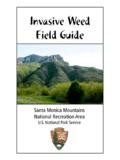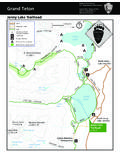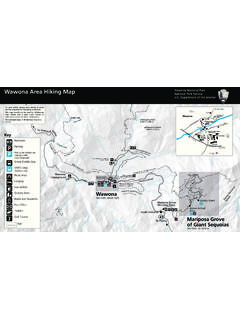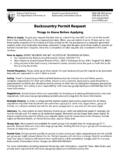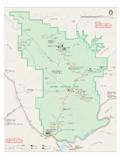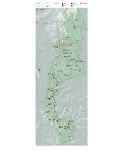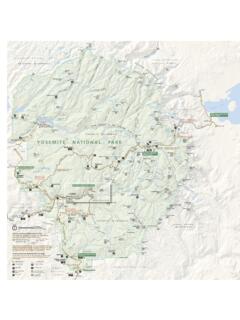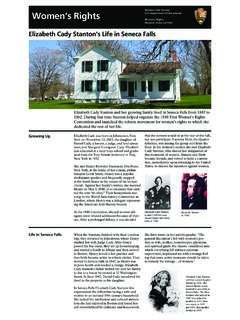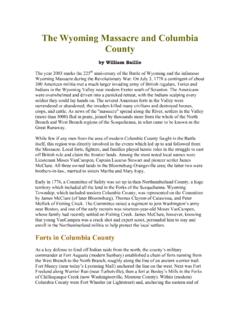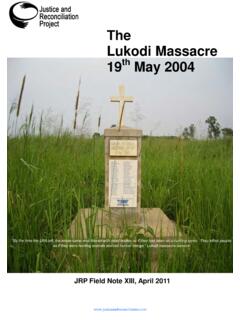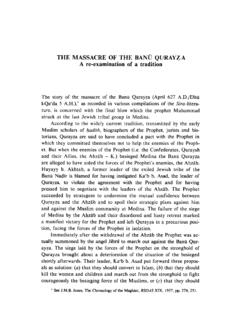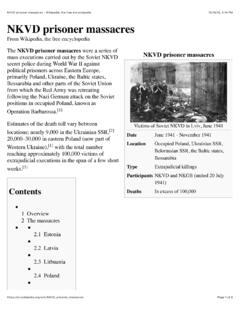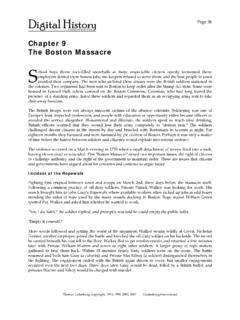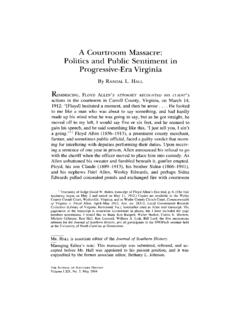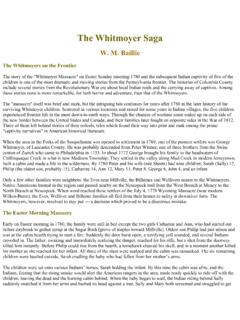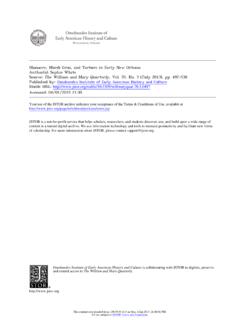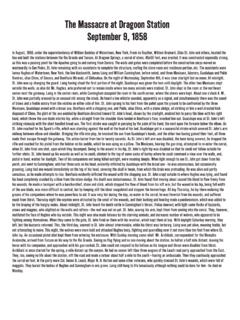Transcription of Murder, Massacre, and Mayhem on the California Coast, 1814 ...
1 81 Journal of California and Great Basin Anthropology | Vol. 34, No. 1 (2014) | pp. 81 100 Murder, massacre , and Mayhem on the California Coast, 1814 1815: Newly Translated Russian American Company Documents Reveal Company Concern Over Violent ClashesSuSAN L. MORRISS usan L. Morris Consulting, 155 Rincon Street, ventura, CA 93001 GLENN J. FARRISS anta Barbara Museum of Natural History, 2425 Elendil Lane, Davis, CA 95616 STEVEN J. SCHWARTZR ange Sustainability office, Naval Air Warfare Center Weapons Division, Point Mugu, CA 93042-5049 IRINA VLADI L. WENDERD epartment of English, University of California , Santa Barbara, CA 93106-3170 BORIS DRALYukDepartment of Slavic Languages and Literatures, University of California , Los Angeles, CA 90095-1502 The Lone Woman of San Nicolas Island, whose solitary 18 year stay on an island off the coast of southern California was commemorated in Scott O Dell s novel, Island of the Blue Dolphins, has been of considerable interest since she was abandoned on the island in 1835 and brought to Santa Barbara in 1853.
2 We examine one of the factors that may have contributed to the Lone Woman s abandonment and discuss several newly translated Russian American Company (RAC) documents, one of which gives details of a long rumored deadly conflict between a Russian led crew of Alaskan native otter hunters and the San Nicolas Island natives (Nicole o). All three documents contain important new information about the nature of the sometimes violent interactions between the Spanish, Russians, Americans, California Indians, and Alaskan natives in the early nineteenth than 160 years have passed since the last native representative of the Nicole o lived on San Nicolas Island. And in that time, many newspaper, magazine, and academic journal articles, along with fiction and non-fiction works, have been written about the life of the solitary Nicole o who died at the Santa Barbara home of George and Sinforosa Nidever in october 1853 after just seven weeks on the California the account of the Lone Woman s aban-don ment on San Nicolas Island and her passage to Santa Barbara is certainly compelling, the deeper historic context is complex and equally fascinating.
3 Unfortunately, errors and exaggerations about the Lone Woman and particularly about the historic events that took place on San Nicolas Island prior to, and including her stranding, have crept into much of the existing literature. A majority of writers in the popular press as well as some scholarly publications have used information from secondary sources and reported it as fact. Emma Hardacre s wild romance for Scribner s 82 Journal of California and Great Basin Anthropology | Vol. 34, No. 1 (2014)Monthly (Hardacre 1880:657 664) is an example, in which details derived from still-living event participants, such as George Nidever, are incorporated into her feature on the Lone Woman along with information from what she refers to as ancient manuscripts specifically, an error-riddled account from the November 1856 issue of the Santa Barbara Gazette (Hardacre 1880:658; Heizer and Elsasser 1961:28 29).
4 1to better comprehend the historic setting of the Lone Woman events, efforts were made to understand the perspectives and priorities of the various cultural groups (Spanish, Russian, American, Mexican, English, California Indian, and Alaskan native) who came into contact in southern California during the early part of the nineteenth century. A review of Russian archival literature led to previously unreported (in English) primary source documents that recounted a series of dramatic incidents on the California coast during this period. Several records described RAC (Russian America Company) otter hunting activities on San Nicolas Island from 1814 to 1819, as well as interactions of crew members with the Spanish on the mainland. three documents were translated into English for this project, and they gave specifics about a long-rumored violent conflict between a Russian otter hunting crew and the Nicole o that took place in 1814.
5 This altercation set events in motion that could have created the context for the removal of all but one of the natives from the island in November 1835 (Dittman 1878; Ellison 1984:80 89; Heizer and Elsasser 1961).2 From these documents we found that the fate of the Lone Woman may have been unexpectedly tied to the business activities of the RAC, and in particular, to the sea otter hunting ventures of a vessel named the Il mena, owned and operated by the RAC from 1813 (Khlebnikov 1973:87; tikhmenev 1978:149 150) until she wrecked off of the California coast at Point Arena in June 1820 (Khlebnikov 1990:42). the RAC was a private mercantile enterprise operating under government oversight, with monopolistic rights to the fur trade in Russian possessions along the north Pacific. one of the RAC vessels that made frequent visits to the California coast on Company business was the Il mena, a two-masted, 200-ton brig originally named the Lydia (tikhmenev 1978:149 150).
6 The Lydia, owned by thomas Lyman and Associates of Boston as of 1804 (Farris 2012:97), was sold by American Captain James Bennett to the RAC Chief Administrator, Alexander Andreevich Baranov, in 1813 (Khlebnikov 1973:87).As was common practice in the early 1800s with the perennially short-staffed RAC, Baranov hired another American sea captain, William Wadsworth, to take the Il mena on her first voyage on behalf of the Company. the ship left Sitka, Alaska in either December 1813 (Khlenikov 1973:88) or January 1814 (ogden 1941:165). on board the ship was a complement of perhaps 25 baidarkas (kayaks), 50 Alaskan native hunters and Creoles (ogden 1941:165), with Russian promyshlenniki (fur traders) timofei Nikitich tarakanov and Iakov Babin as overseers (Istomin et al. 2005:267 270).3As a result of the voyages of the Il mena and two supplementary support vessels, the American-owned Pedler and Forester, from 1814 1819, violent incidents, including murder, massacre , and Mayhem , were reported to have occurred.
7 These events involved RAC employees who were on San Nicolas Island and on the California coast. Details of these dramatic encounters are described in the newly-translated RAC AND METHODS three Russian American Company documents were selected for translation into English because they described events involving RAC otter hunting groups on San Nicolas Island prior to the abandonment of the Lone Woman in 1835. the documents coincidentally featured the activities of the RAC ship, Il mena, from 1814 to 1819. the ship was uniquely connected to San Nicolas Island (Fig. 1), which the RAC considered belonged to no nation (Dmytryshyn et al. 1989:332). During the second decade of the nineteenth century, the Russians referred to San Nicolas Island as Il men or Il mena (Istomin et al. 2005: 268, 240 map; Pierce 1984:xi). It is likely that the name came from a Russian lake in the Novgorod oblast : Lake Il men (B.)
8 Dralyuk, personal communication 2012).4the three documents selected for this project were written by different authors for different purposes, describing separate but related events that took place on San Nicolas Island during the second decade of the nineteenth century. the first document is an explanatory note dated July 15, 1818, written by Ivan Alexandrovich ARTICLE | Murder, massacre , and Mayhem on the California Coast 1814 1815: 83 Newly Translated Russian American Company Documents Reveal Company Concern Over Violent Clashes | Morris / Farris / Schwartz / Wender / Dralyuk Kuskov, administrator at Fort Ross, the RAC colonial outpost in California , in response to a demand for an explanation from Leontii Andreianovich Hagemeister, Chief Administrator of the RAC, from January 11, 1818 october 24, 1818 (Pierce 1984:11) about a possible massacre that involved RAC hunters.
9 Kuskov s note gives details of a violent altercation that took place on San Nicolas Island in 1814 between the Nicole o and the Alaskan native otter hunters under the command of RAC employee Iakov Babin. Hagemeister asked Kuskov to send Babin to Sitka (Alaska), along with testimony of others involved in the event, so that Babin could be held accountable for his responsibility in the affair. Babin was to travel to the Main office of the RAC in St. Petersburg for an inquest into the altercation (Pierce 1984:138 139).the second document, dated May 1819, is the deposition or testimony of an Alaskan native otter hunter, Ivan Kyglaia, who was a member of a hunting party on San Nicolas Island in 1815, and was witness to an unusually gruesome incident while he was a Spanish captive in southern California (Fig. 2). Kyglaia s group, under the direction of RAC employee Boris tarasov, went from San Nicolas Island in 1815 to the mainland and was captured by the Spanish at San Pedro.
10 Kyglaia s testimony presents an eyewitness account of the cruel treatment he and a fellow Kodiak Island native, Chukagnak, experienced at the hands of a priest and California Indian neophytes under his direction. Kyglaia tells of Chukagnak s death from torture by their captors. While Kyglaia s account has been repeated and paraphrased by many authors (Dmytryshyn et al. 1989:332 334; Farris 1990, 2012:128 132; Pierce 1990:397 398; tikhmenev 1978:138), Kyglaia s verbatim testimony is translated here into English in its final document of the three is summarized here rather than included as a full translation. It is an excerpt Santa BarbaraSanMiguelIslandSanta RosaIslandSanta CruzIslandAnacapaIslandSantaMonicaBaySan PedroBaySantaCatalinaIslandSanDiegoBaySa n ClementeIslandSantaBarbaraIslandLos A ngele sSan Nicolas IslandSan PedroNPACIFIC 1. California coast and the Channel Islands with the baidarka (kayak) route (black line) taken by two Alaskan natives paddling to San Nicolas Island, 1816 or 1817 (Document 2).

